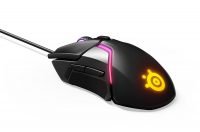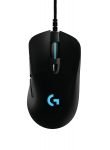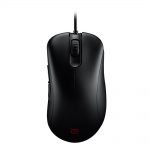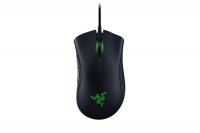If you have ever checked out our list of CS:GO Pro Settings or some of the other pro lists, you will have encountered the words “DPI”, “CPI”, “eDPI” or “eCPI”. So what are all these terms and what do they stand for?
EDPI stands for “Effective DPI” and is a measure of the effective mouse sensitivity. DPI again stands for Dots Per Inch and actually refers to the resolution of a printer. If we are talking about picture resolution, the correct term would be PPI (Pixels Per Inch), but we are not. What we are really interested in is the CPI, which again stands for Counts Per Inch. Confused yet? Don’t worry, I can explain.
In the gaming world, DPI is often mistaken for CPI. It has become so firmly rooted in our understanding of mouse sensitivity, that it is a difficult task to change. However, we have seen some steps in the right direction the last couple of years with large gaming brands starting to market their mice with the correct term CPI instead of DPI.
So what is CPI (DPI)?
As mentioned before, CPI stands for counts per inch and is the number of steps the mouse reports when it moves one inch. So in other words, it is the sensitivity of the mouse itself. If you have a CPI of let’s say 400, your mouse will report 400 steps per inch. So moving one inch, will result in 400 “pings” to your monitor so to speak. If you, on the other hand, have a CPI of 1,000 your mouse will report 1,000 times during one inch, resulting in a higher sensitivity.
What is eCPI (eDPI) then?
Most computer games let you adjust the sensitivity of your mouse in-game. These mouse sensitivities are purely software based and do not affect your mouse hardware sensitivity (the CPI). Since people have different CPI settings on their mouse eCPI is, therefore, a measure of the total effective sensitivity or total effective CPI. It is simply a measure created to compare the effective mouse sensitivity. Let’s say we have two players. Player 1 has his mouse CPI set to 400 and in-game sensitivity on 2. Player 2 has a CPI of 1,600 and in-game sensitivity of 1. If you would only look at the player’s in-game sensitivity, you would falsely believe that Player 1 had the highest sensitivity. But because his CPI is much lower, he has the lowest total mouse sensitivity of the two.
Is higher CPI better?
In the good old days, gaming brands would market their mice based on the DPI. 10,000 DPI, 16,000 DPI or even 20,000 DPI. Gamers believed it was a measure of how good the mouse was since higher numbers are usually better in the tech world. It turned out it was mostly a marketing gimmick. What really makes a great mouse is the sensor in the mouse (we will get to this another day). So, is higher better? The answer is no; higher CPI is not better. There are limits for how high the native CPI of a mouse can be. When you see a mouse market itself with 16,000 CPI, it doesn’t have a native CPI of 16,000. This is due to physical limitations of the size of the mouse sensor. Manufacturers use various techniques to increase the CPI, but in reality, you lose out on precision. So to conclude this section, NO you don’t have to care about the CPI of your mouse. Instead, you should care about the mouse sensor which is the most important part.
What CPI should I use?
The best thing is to use the native mouse resolution. What this is will depend on the mouse, but for most mice, it is in the range of 800 to 1,600. This is also why you will see most professional players be in this range. On the other hand, you shouldn’t be too worried about the exact CPI, as long as you don’t go extremely low or extremely high you are fine.
In recent times there have been some concerns about pixel skipping on lower sensitivities. I will not cover it here but mention that it might be a good idea to go for the higher end of your native mouse resolution in order avoid the pixel skipping problem. But more on this in a future guide. In the end, it is a tradeoff.
How do I calculate eCPI (eDPI)?
How you calculate your eCPI (effective CPI/effective sensitivity) depends on the game you play as it may vary. In CS:GO it is fairly simple and only requires basic elementary school math. You multiply your CPI with your in-game sensitivity, easy as that.
Examples:
| DPI | In-game sens. | eCPI |
| 800 | 2 | 800 x 2 = 1,600 |
| 600 | 2.5 | 600 x 2.5 = 1,500 |
Easy peasy.
What about my mouse polling rate or refresh rate?
The polling rate, or your mouse refresh rate, is how often the mouse reports its position to the computer. It is measured in Hz. Usually, polling rates span from 125 Hz to 1,000 Hz. A polling rate of 125 Hz means that it reports to the computer 125 times every second. There are 1,000 milliseconds in a second, so 125 times every second corresponds to every 8 milliseconds (1,000 / 125 = 8). 1,000 Hz polling rate corresponds to every 1 millisecond and so on.
So is a higher polling rate better? This time it is. The higher the polling rate, the faster your mouse will react when you move the mouse around. Let’s hope we will soon see 2,000 Hz gaming mice!
Recommended gaming mice
If you are on the look for a new gaming mouse, we have collected a handful of recommendations from different large gaming brands. They are both based on what a lot of professional players use, but also our research and on the sensors in the mice. All of them features excellent mouse sensors and is the best of the best currently on the market.
I hope this article helped to clarify what CPI and eCPI are, and I hope you will help spread the word about the correct use of CPI and not DPI. If you have any questions, please feel free to leave a comment on this page.



